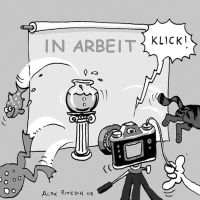Swinhoe's Striped Squirrel (Tamiops swinhoei)
| Swinhoe's Striped Squirrel Tamiops swinhoei | |
|---|---|
| Name | Swinhoe's Striped Squirrel |
| Name Lat. | Tamiops swinhoei |
| Family | Squirrels |
| Family lat. | Sciuridae |
| Order | Rodents |
| Order lat. | Rodentia |
| Origin | Asia |
| Climate | Subtropical |
| Habitat | Forest |
| Diet | Seeds, green fodder, insects |
| Behavior | Sociable |
| Keeping | Pair, group |
| Care Level | Moderate |
| Life Span | 6-10 years |
| Protection | No |
| Metric Units | |
| Size | 10-16 cm |
| Temperature | Room temperature |
| Housing | 100 x 100 x 150 cm |
| US Units | |
| Size | 3.9"-6.3" |
| Temperature | Room temperature |
| Housing | 40" x 40" x 60" |
Distribution and habitat
The distribution range of the diurnal Chinese tree-striped squirrels extends from northern Myanmar through southern China to Vietnam, where they live in the mixed and coniferous forests up to 3000 m altitude, mostly in tree hollows, which they leave during the day to search for food.
Maintenance
Minimum dimensions for the enclosure
| 1 animal | area: 0.6 m² | length: 1 m | height: 1 m |
An enclosure that is placed in a bright (no direct sunlight), draft-free and quiet place is recommended, with ventilation openings on the sides, and it must not be tightly closed at the top. In addition, an outdoor enclosure should be provided. It should be variedly structured with roots, branches and platforms connected with ramps at different heights as well as offer hiding and shelter possibilities (sleeping and storage huts, cork tubes etc.) and occupation material (e.g. cardboard tubes). Commercially available small animal litter or a sand-peat mixture is suitable as substrate. They need food and drinking containers (drinking bottles), a sand bath (chinchilla sand) for fur care as well as nest building material (hay, pulp). Nail material as well as a rodent stone must always be available to wear down their teeth. A natural day-night rhythm must be ensured. They should be kept at room temperature.
Diet
They are mixed feeders, eating mainly vegetable food, but also need animal protein. The species-specific food offer consists of a grain mixture, available in specialized trade as "chipmunk food", supplemented with fresh food (apples, pears, berries, carrots, zucchini, alfalfa, dandelion), fresh twigs from unsprayed fruit trees and a mineral stone. In addition, some animal protein (e.g., lean, minced beef, hard-boiled egg, flour beetle larvae, zophobas). Occasional dried fruits, such as raisins, rose hips (high in vitamin C), and nuts can be offered as treats. Drinking water must always be available in hanging bottles or in stable, open containers and, like food, must be offered fresh daily. Water and food containers must be arranged so that they cannot become soiled.
A regular and varied diet promotes health and prevents deficiency symptoms.
Behaviour and compatibility
Tree chipmunks like to live in sociable groups and require a well-structured enclosure with several roosts. At the first signs of incompatibility, the animals should be separated immediately.
Reproduction and breeding
The distance between anus and urethral outlet is larger in the male. Teats are visible in the female.
The gestation period is about 38 days. A litter usually consists of 2-6 young, which are born naked, blind and deaf. The young are suckled for 6-8 weeks and can then be separated from the mother. Sexual maturity begins at 7-9 months of age, which can be seen in the male by the fully formed testes.
Life expectancy is 7-12 years.
Important
They do not hibernate but hibernate, which is interrupted again and again to feed. The sociable and playful animals are very curious and sometimes become trusting. Variety is provided by changing furnishings and occasional rearrangement. They are escape animals and require adequate retreat and hiding space. They must not be grabbed or pulled by the tail as this can cause serious injury. Special attention must be paid to thorough hygiene and contamination must be removed regularly.
Further literature can be found in your pet store
References
Text: petdata; Image: Alex Rinesch
Source: BMEL (2014): Gutachten über Mindestanforderungen an die Haltung von Säugetieren; W. PUSCHMANN, D. ZSCHEILE, K. ZSCHEILE (2009): Zootierhaltung - Tiere in menschlicher Obhut: Säugetiere, Verlag Harri Deutsch
- Gemäß § 21 Abs. 5 Tierschutzgesetz idgF
